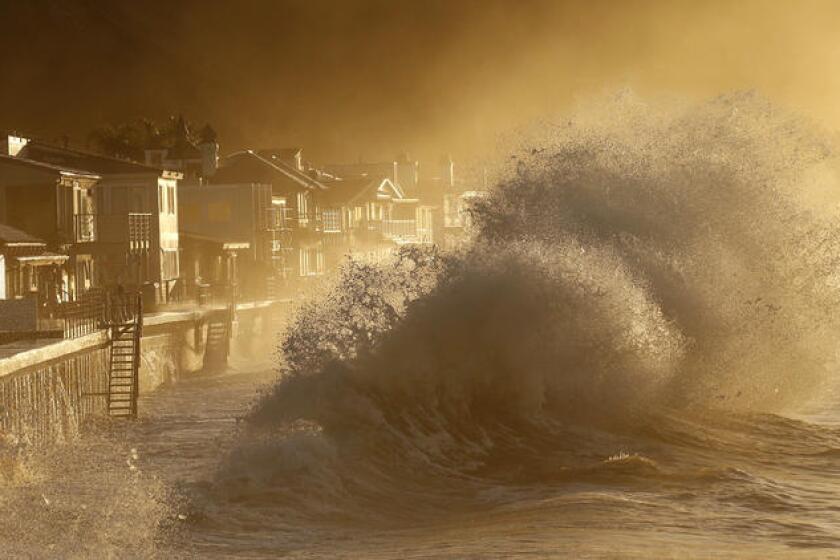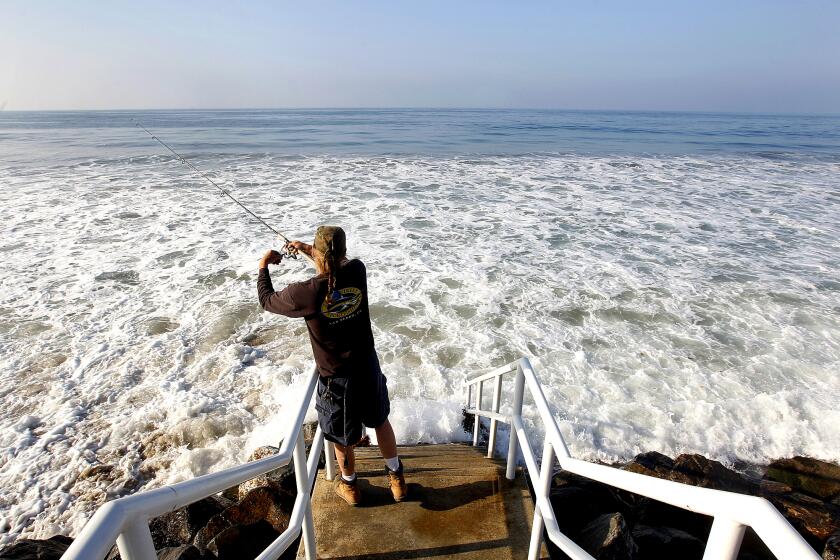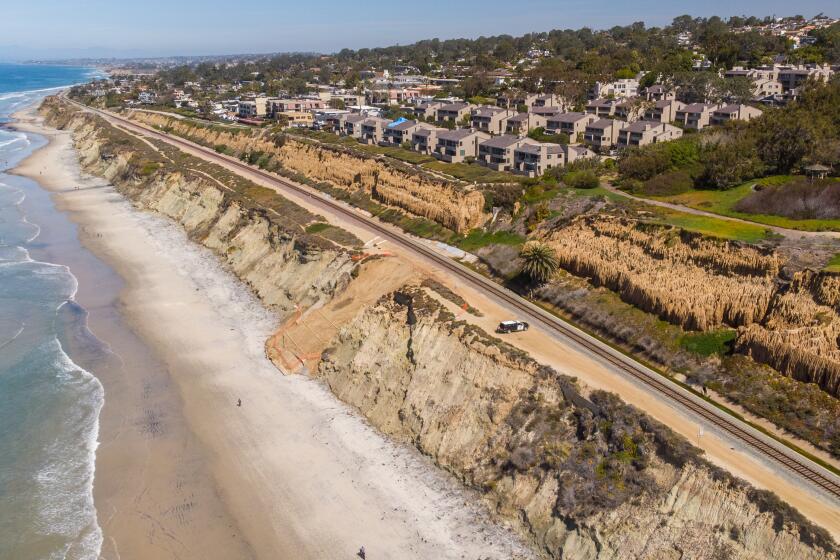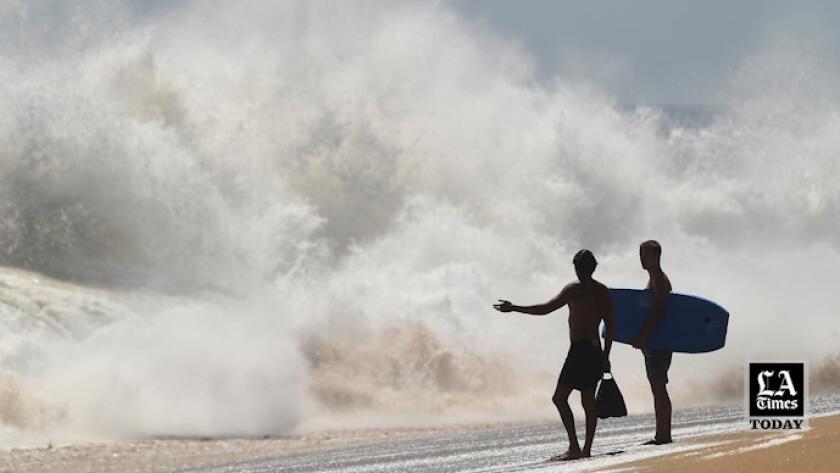Global warming is making big(ger) waves off the California coast, scientists say

- Share via
Ocean waves along the California coastline have long symbolized the best the state has to offer: surf-ready swells at Malibu and Rincon; the misty beauty of breakers crashing along the North Coast; the foamy, playful waves welcoming beachgoers from San Diego to Santa Cruz.
But climate change has left no part of the sea unaltered. As melting glaciers and hotter temperatures force global sea levels ever higher, the height and power of ocean waves are increasing along California’s coast — and elsewhere.
Using seismic data stretching back nearly a century, oceanographer Peter Bromirski of the Scripps Institution of Oceanography at UC San Diego has found that the height of winter waves has increased by an average of nearly 12 inches since 1970. That makes them 13% taller, on average, than winter waves from 1931 to 1969.
What’s more, intense storms producing waves greater than 13 feet in height occurred twice as often from 1996 to 2016 as they did from 1949 to 1969, Bromirski found. His study was published Tuesday in the Journal of Geophysical Research — Oceans.
The numbers confirm what many coastal residents have experienced firsthand as they’ve seen floodwaters lap over boardwalks and cliffs crumble away: The sea is becoming harder to restrain.
The study’s data on the increased frequency of giant waves are “especially interesting,” said Brett Sanders, a professor of civil and environmental engineering at UC Irvine who was not directly involved in the research.
“Beaches usually erode quickly during storms and then recover slowly under mild wave conditions,” said Sanders, who runs UCI’s Flood Lab. “But when the coast experiences several storms in a row, with inadequate time for beach recovery, the impacts of winter storms magnify as we saw this year in Northern California.
“Given increases in wave energy and rising sea levels,” he said, “a takeaway message is that holding back coastal erosion is becoming even more challenging.”
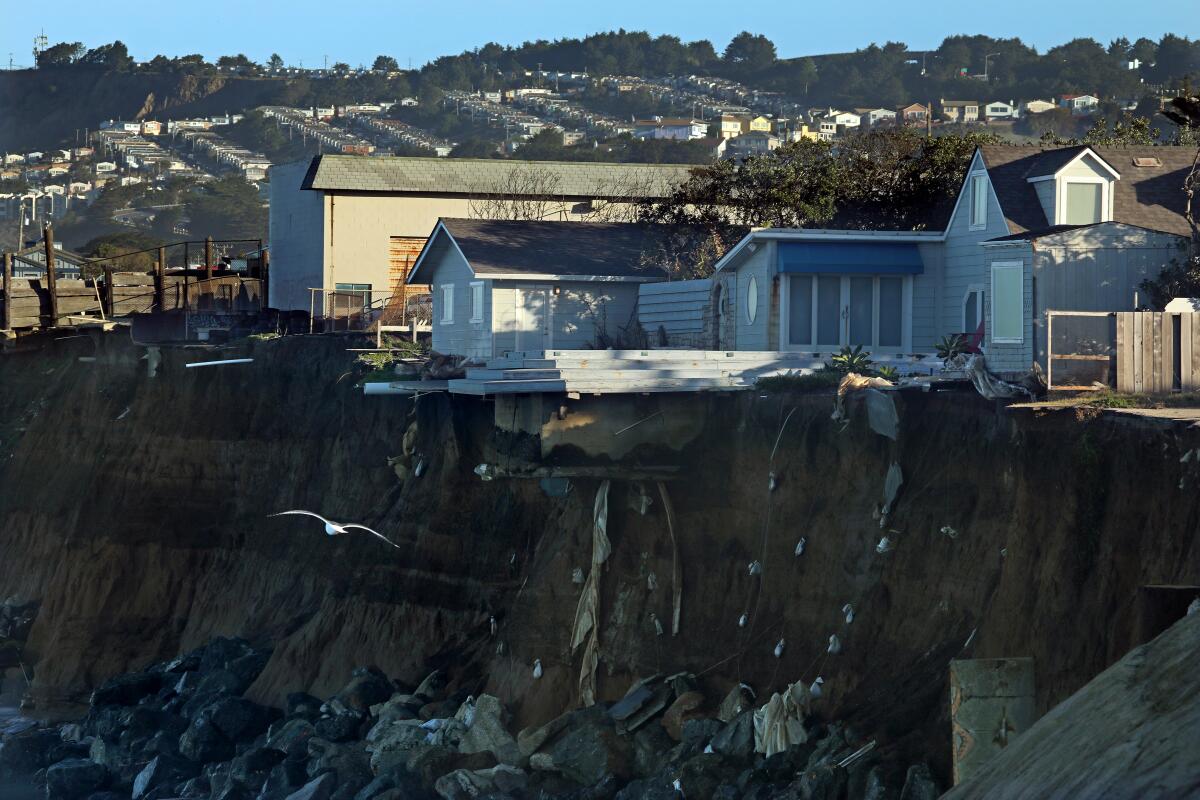
The study takes a long look back at the history of California’s winter storms, which are typically far more frequent and destructive than summer ones.
The National Oceanic and Atmospheric Administration maintains a network of buoys that collect data on wave height along the U.S. coasts. That program wasn’t founded until the 1970s, after average global temperatures had already begun their post-industrial ascent.
To go further back in time, Bromirski gathered data from seismograph records held in UC Berkeley’s archives. Designed to detect earthquakes, the seismographs were sensitive enough to pick up on pressure fluctuations caused by waves pounding shores miles away.
The years-long, labor-intensive process of converting paper graphics into digital data required a small squadron of undergraduate assistants and a special flatbed scanner, but when it was done, Bromirski had a solid record of wave activity along the California coast stretching back to the Great Depression.
As climate change heats ocean water around coral reefs, scientists in Florida race to haul coral to safety in gene-bank tanks before they go extinct.
The results confirmed that warming temperatures from greenhouse gas emissions are indeed associated with stronger and more frequent storms, as oceanographers and climate scientists have long predicted.
To warm the planet is to “put more energy into the atmosphere,” Bromirski said. “That produces stronger storms that produce stronger winds that lead to higher waves.”
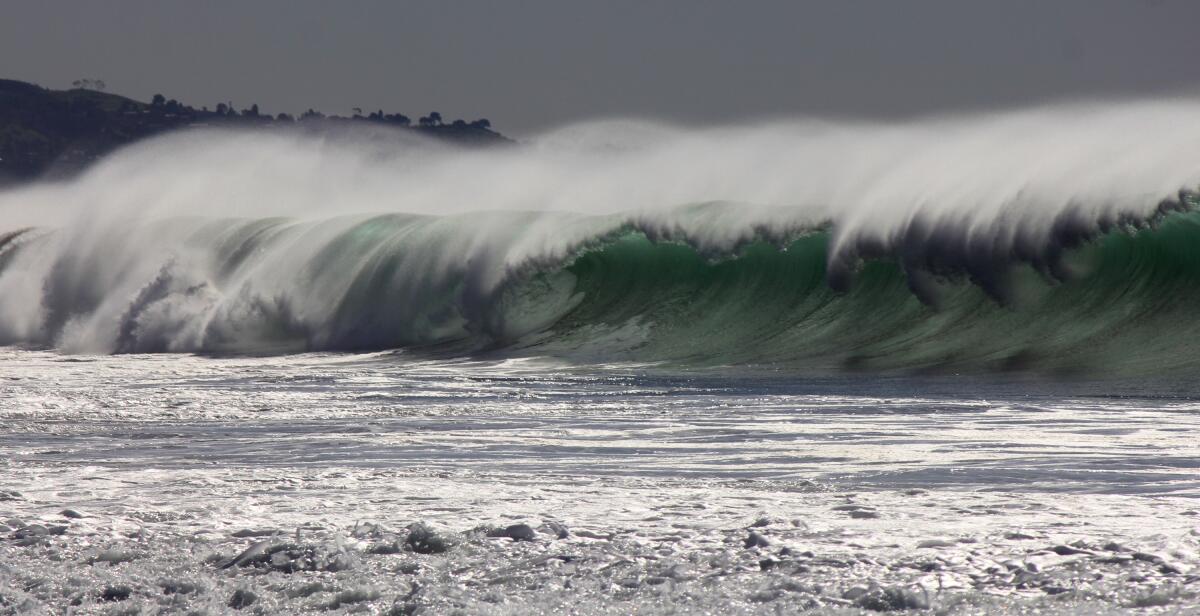
The data show that long periods of relatively quiet wave activity are quite literally history.
The periods of 1939 to 1947 and 1957 to 1965 were marked by significantly less wave activity than average. That kind of calm seems to have evaporated as temperatures rose.
“Those periods of low wave activity are significant in telling you what was possible before the atmosphere was energized,” Bromirski said. “We haven’t seen anything like it after 1970.”
The U.S. coastline is expected to experience as much sea level rise in the next 30 years as it did in the hundred years prior.
The waves that pummel the coastline during California’s winter storms are largely generated in the North Pacific. So, to compare his calculations to recorded storm activity in the North Pacific, Bromirski looked at the Aleutian Low, a semi-permanent wintertime low-pressure system near Alaska’s Aleutian Islands.
The intensity of the Aleutian Low has generally increased since 1970, right in line with the increased storms in Bromirski’s data.
“The results in this paper are consistent with what we have seen from satellite data and model hindcasts over the last 35 years,” said Ian Young, a professor of engineering at the University of Melbourne who studies wave mechanics but was not involved in this paper. “Wave model projections for the future show that under expected global warming scenarios, we will see continued growth in ocean waves out to 2100.”
Most of the energy behind California’s summer waves is generated in the winter swells of the Southern Ocean surrounding Antarctica, where the biggest waves are only getting bigger as the planet warms.
The average wave in the Southern Ocean has grown nearly 8 inches in the last 30 years. The tallest 10% of that ocean’s waves have grown an additional 12 inches, on average, during that same time period.
None of this is good news for the coastline.
A new study pinpoints erosion hot spots along the entire California coast — and found that cliffs in Northern California are disappearing the fastest.
The average sea level worldwide has increased by 7 to 8 inches in the last century, primarily as a result of human activity.
Should greenhouse gas emissions continue as projected, sea levels along some parts of California’s coastline could rise as much as 66 inches by 2100, drowning two-thirds of the state’s beaches.
In a higher sea, even a wave of moderate height will strike the coast with as much force as a much taller wave carries today, Bromirski said.
“The waves are riding in on sea level,” he said. The higher the seas rise, the more powerful that ride gets, and the faster the effects of erosion and flooding reshape life in California.
- Share via
Watch L.A. Times Today at 7 p.m. on Spectrum News 1 on Channel 1 or live stream on the Spectrum News App. Palos Verdes Peninsula and Orange County viewers can watch on Cox Systems on channel 99.
